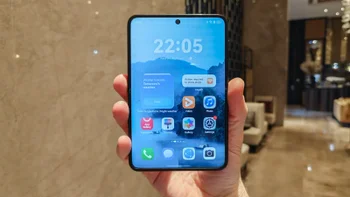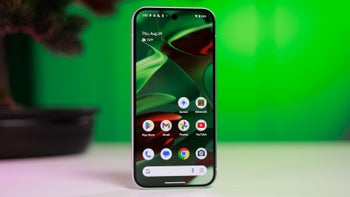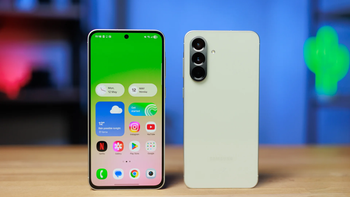Pixel 10 and its Top 10 features that will try to convert us to Google in 2025
This time around, the "vanilla" Google flagship might pack an extra camera on its back.

I still remember the first Pixel smartphone from 2016 and now, less than ten years later, we're looking at the anniversary Pixel 10.
For some years, yours truly was a part of the Google Pixel team – I rocked the wonderful Pixel 3a, and I was amazed by how much bang for the buck this tiny beast was offering.
That's why I'm really interested in what the Pixel 10 will be like, and I want to share my findings with you about the phone's Top 10 features to expect.
Starting right off the bat, this is by far the most anticipated aspect of the Pixel 10: its chipset. The Tensor G5 will be Google's first fully in-house chip, built by TSMC using its advanced 3nm process, offering improved performance and efficiency over previous models. While this marks a significant step forward, don't forget that early versions often face typical first-generation issues, meaning real refinement might not arrive until a future iteration.
The "vanilla" Pixel 10 is reportedly about to make photography enthusiasts rejoice by adding a telephoto camera. It will likely utilize the 11MP Samsung 3J1 sensor previously used in the Pixel 9 Pro Fold. That's great news: zoom snappers are what I (and many others) have been using far more frequently than the mandatory ultra-wide cameras that many phones – even mid-rangers – come equipped with nowadays.
Are you throwing a party over the telephoto camera rumor mentioned above? Not so fast, because apparently, the Pixel 10 is expected to feature the Samsung GN8 as its primary sensor, replacing the larger and more capable GNV used in the Pixel 9. This change marks a clear downgrade in camera hardware, bringing the base model closer to the budget-oriented Pixel 9a. It suggests Google is intentionally scaling back features to further differentiate the standard Pixel from the Pro lineup.
The ultra-wide lens is also taking a step down, switching to the Sony IMX712 sensor instead of the more advanced IMX858 found in the previous model. This same sensor is used in the Pixel 9a, reinforcing the idea that the Pixel 10 shares more DNA with Google's affordable line than with its flagship predecessor. Google is obviously reserving premium camera components for its higher-end devices.
New AI-driven features powered by the upcoming Tensor G5 chip are expected. Among them are tools like "Video Generative ML" for smarter video editing, "Speak-to-Tweak" for quick photo adjustments, and "Sketch-to-Image" for turning drawings into images. Looking ahead, the Pixel 11 is rumored to bring 100x zoom, enhanced Cinematic Blur with lighting controls, and a new "Ultra Low Light video" mode that works entirely on-device in very dim settings.
The Pixel 10 may finally address a long-standing issue by improving its PWM dimming rate, a change that could reduce eye strain for users sensitive to screen flicker. PWM, or pulse-width modulation, controls screen brightness by rapidly turning pixels on and off, and low flicker rates can lead to discomfort. A higher PWM rate is easier on the eyes, making this a meaningful upgrade. While the Pixel 9 series uses a 240Hz rate, the Pixel 10 is expected to raise that significantly, moving closer to competitors like Samsung's Galaxy S25, which sits around 492Hz.
Information that has surfaced from notes written by a Google engineer in the Android Open Source Project code reads that the Pixel 10 will offer a 30% faster boot time, while the Pixel Fold's startup is improved by 25%. I personally don't care if my phone boots for 30, 60 or 90 seconds, but it's impressive and many will find it useful, I'm sure.
The new Tensor chip is expected to bring major performance improvements to the Pixel 10 series next year. One potential upgrade is the addition of Qi2 wireless charging, which Google skipped for the Pixel 9 lineup. Qi2 supports up to 15W charging and uses magnetic alignment for better efficiency and reduced heat, making it a strong candidate for the Pixel 10.
The Pixel 10 is expected to launch in August 2025, continuing the earlier release pattern set by the Pixel 9. For years, Google stuck to October announcements, but that changed with last year's shift in schedule. Pre-orders for the Pixel 10 will likely begin the same day it's unveiled, with minimal delay between announcement and availability.
The Pixel 10 is expected to measure 152.8 x 72 x 8.6mm, with a total thickness of around 12mm including the camera bump, and early renders suggest it closely resembles last year's model. Which in turn resembles an iPhone to a degree… Bezels appear unchanged, and Google seems to be sticking with its familiar design, including the right-side volume and power button layout. The phone may launch at the same $799 price as the Pixel 9, despite the new Tensor G5 chip.
For some years, yours truly was a part of the Google Pixel team – I rocked the wonderful Pixel 3a, and I was amazed by how much bang for the buck this tiny beast was offering.
Tensor G5
Starting right off the bat, this is by far the most anticipated aspect of the Pixel 10: its chipset. The Tensor G5 will be Google's first fully in-house chip, built by TSMC using its advanced 3nm process, offering improved performance and efficiency over previous models. While this marks a significant step forward, don't forget that early versions often face typical first-generation issues, meaning real refinement might not arrive until a future iteration.
Telephoto camera for the masses
The "vanilla" Pixel 10 is reportedly about to make photography enthusiasts rejoice by adding a telephoto camera. It will likely utilize the 11MP Samsung 3J1 sensor previously used in the Pixel 9 Pro Fold. That's great news: zoom snappers are what I (and many others) have been using far more frequently than the mandatory ultra-wide cameras that many phones – even mid-rangers – come equipped with nowadays.
A downgraded main camera?
Are you throwing a party over the telephoto camera rumor mentioned above? Not so fast, because apparently, the Pixel 10 is expected to feature the Samsung GN8 as its primary sensor, replacing the larger and more capable GNV used in the Pixel 9. This change marks a clear downgrade in camera hardware, bringing the base model closer to the budget-oriented Pixel 9a. It suggests Google is intentionally scaling back features to further differentiate the standard Pixel from the Pro lineup.
An ultra-wide snapper from the cheaper, older Pixel 9a
The ultra-wide lens is also taking a step down, switching to the Sony IMX712 sensor instead of the more advanced IMX858 found in the previous model. This same sensor is used in the Pixel 9a, reinforcing the idea that the Pixel 10 shares more DNA with Google's affordable line than with its flagship predecessor. Google is obviously reserving premium camera components for its higher-end devices.
Chock-full of AI features
New AI-driven features powered by the upcoming Tensor G5 chip are expected. Among them are tools like "Video Generative ML" for smarter video editing, "Speak-to-Tweak" for quick photo adjustments, and "Sketch-to-Image" for turning drawings into images. Looking ahead, the Pixel 11 is rumored to bring 100x zoom, enhanced Cinematic Blur with lighting controls, and a new "Ultra Low Light video" mode that works entirely on-device in very dim settings.
Better display that's easier on the eyes
The Pixel 10 may finally address a long-standing issue by improving its PWM dimming rate, a change that could reduce eye strain for users sensitive to screen flicker. PWM, or pulse-width modulation, controls screen brightness by rapidly turning pixels on and off, and low flicker rates can lead to discomfort. A higher PWM rate is easier on the eyes, making this a meaningful upgrade. While the Pixel 9 series uses a 240Hz rate, the Pixel 10 is expected to raise that significantly, moving closer to competitors like Samsung's Galaxy S25, which sits around 492Hz.
Faster loading by 30%
Information that has surfaced from notes written by a Google engineer in the Android Open Source Project code reads that the Pixel 10 will offer a 30% faster boot time, while the Pixel Fold's startup is improved by 25%. I personally don't care if my phone boots for 30, 60 or 90 seconds, but it's impressive and many will find it useful, I'm sure.
Let's hope for Qi2 support
The new Tensor chip is expected to bring major performance improvements to the Pixel 10 series next year. One potential upgrade is the addition of Qi2 wireless charging, which Google skipped for the Pixel 9 lineup. Qi2 supports up to 15W charging and uses magnetic alignment for better efficiency and reduced heat, making it a strong candidate for the Pixel 10.
Launching in August
The Pixel 10 is expected to launch in August 2025, continuing the earlier release pattern set by the Pixel 9. For years, Google stuck to October announcements, but that changed with last year's shift in schedule. Pre-orders for the Pixel 10 will likely begin the same day it's unveiled, with minimal delay between announcement and availability.
The same design is here
The Pixel 10 is expected to measure 152.8 x 72 x 8.6mm, with a total thickness of around 12mm including the camera bump, and early renders suggest it closely resembles last year's model. Which in turn resembles an iPhone to a degree… Bezels appear unchanged, and Google seems to be sticking with its familiar design, including the right-side volume and power button layout. The phone may launch at the same $799 price as the Pixel 9, despite the new Tensor G5 chip.
Follow us on Google News














Things that are NOT allowed:
To help keep our community safe and free from spam, we apply temporary limits to newly created accounts: